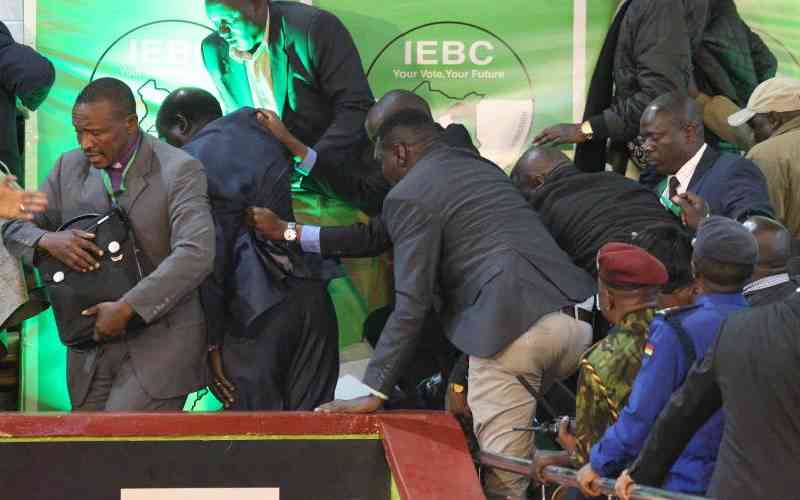
The supreme petitions finally reached the apex court, an overwhelming eight of them, following the August 9 polls.
For the next two weeks, we will be bamboozled with complex legal arguments minted with the occasional Latin and sweetened with the sporadic legal wit.
Hidden behind all this complexity, with terms like “servers”, “log ins” and “hackers” is the little recognised fact that Kenya’s election is quite basic and that apart from voter identification, it is largely manual.
There are 46,232 individual polling stations (what we used to call streams) that have a maximum of 700 voters.
Voting happens in each of those polling stations and once polling is closed, the ballot boxes are closed in the presence of agents and polling officials.
Vote counting is then carried out in the same room immediately thereafter.
Whatever opportunity exists to tamper with the results at that time is compromised by the large number of election officials and agents still in the room at the close of polling.
One would also have to deal with serialised ballot paper counterfoils, digital records of the voters who voted in that station and ensure that any new “voters” introduced in one race also “vote” in the other races.
Once counting is concluded, the results are then hand-filled in the “A” series forms, in the same the polling station.
It is the role of party agents to ensure that the votes filled in the “A” form reflect the performance of their candidate by being in the room and alert at counting time since they will be required to sign the Form A.
While it is possible to alter results before they are entered into Form A, to have any impact, one would have to alter the results in hundreds, if not thousands, of individual independent polling stations and also ensure that no one records any illegal conduct, which is almost impossible in present day Kenya.
Since the presidential votes are counted first, the Form 34A therefore tends to be signed by all agents, since at that hour they do not know how the rest of the country is voting.
I have seen a report by one of the observer groups that indicate that most Form 34As in this election were signed by party agents from both sides.
By the way, any serious presidential contender, who naturally operates their own tally centre, knows the final results of the election, since they receive the polling station results from their agents by 1am of election night.
The signed Form 34A is then uploaded on the IEBC portal which in this election, was made available publicly. However, the original Form 34As are retained by the Returning Officers who then transfer the individual polling station results into a constituency aggregated Form 34B.
The original 34As are eventually taken to IEBC and it is what IEBC uses to declare the election after preparing its own aggregation Form 34C. By the way, it is possible to have minor errors of additions in Form 34A.
Those errors cannot be translocated into Forms 34B and C and are usually corrected in Form 34C. But these changes are only about totals of votes cast, never any changes to the votes candidates received. On that score Form 34A is final.
Anyone who wants to confirm the validity of a result should then concentrate on the original Form 34A and ensure that it reflects their own copy of the results.
All other documents, including the ones in the portal, are for verification. It will be interesting to watch how the parties navigate these issues but for candidates who have a stake in any future election, they must remember, elections are won or lost before election night during the campaigns, and ultimately on election night in the 46,232 polling stations.
Now, over to the seven learned ladies and gentlemen.